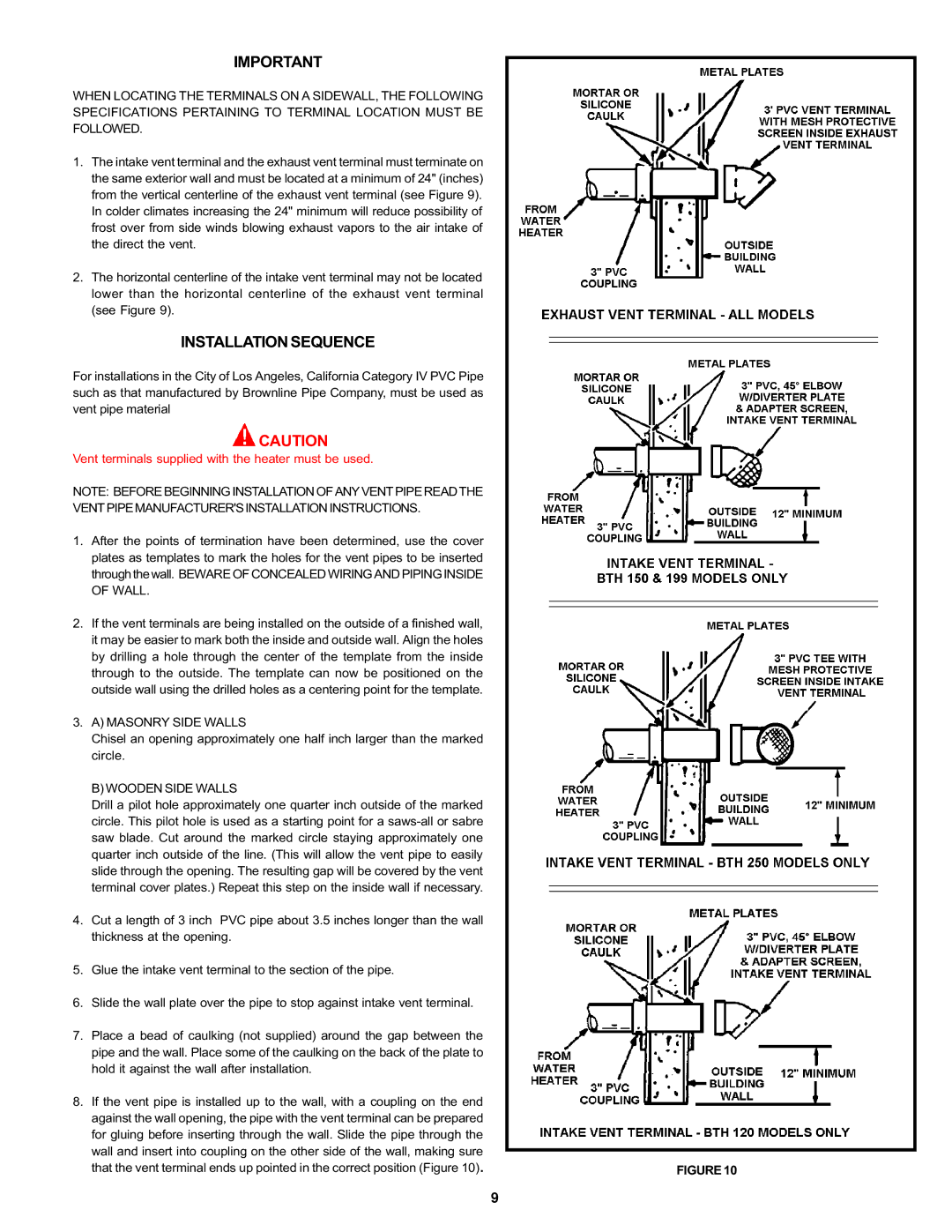BTH 120 - 250 specifications
The A.O. Smith BTH 120 - 250 is a high-efficiency water heater designed for commercial and industrial applications, renowned for its advanced technology and durable construction. This model stands out for its ability to provide reliable hot water while minimizing energy consumption, making it an ideal choice for businesses looking to enhance operational efficiency.One of the main features of the A.O. Smith BTH series is its innovative design that integrates cutting-edge condensing technology. This system maximizes energy use by capturing and reusing heat that would otherwise be lost in traditional water heating methods. As a result, the BTH 120 - 250 delivers exceptional thermal efficiency ratings, often exceeding 90%, thereby reducing overall operating costs.
The BTH series is available in various capacities, ranging from 120,000 to 250,000 BTU per hour, ensuring that it meets the diverse needs of different businesses. This flexibility allows for installation in a variety of settings, from small restaurants to large manufacturing facilities.
Another significant characteristic of the BTH 120 - 250 is its robust construction. Built with high-quality materials, this unit is designed to withstand the rigors of continuous use. Its stainless steel heat exchanger resists corrosion and scale build-up, providing longevity and reduced maintenance requirements.
Safety features are integrated into the BTH series as well. It includes an electronic ignition system that eliminates the need for a standing pilot light, enhancing operational safety and reducing energy waste. Additionally, the built-in diagnostic system allows for quick identification of issues, streamlining maintenance procedures.
The BTH series also emphasizes user-friendly operation. Equipped with advanced control options, operators can monitor and adjust performance settings effortlessly. The digital display provides real-time operational data, which can assist in optimizing performance and ensuring consistent hot water availability.
In summary, the A.O. Smith BTH 120 - 250 is an exceptional choice for commercial water heating, combining high efficiency, advanced technology, and robust durability. Its innovative design, safety features, and user-friendly controls position it as a trusted solution for businesses seeking reliable hot water systems. By investing in this model, operators can ensure optimal performance while enjoying significant energy savings over time.

